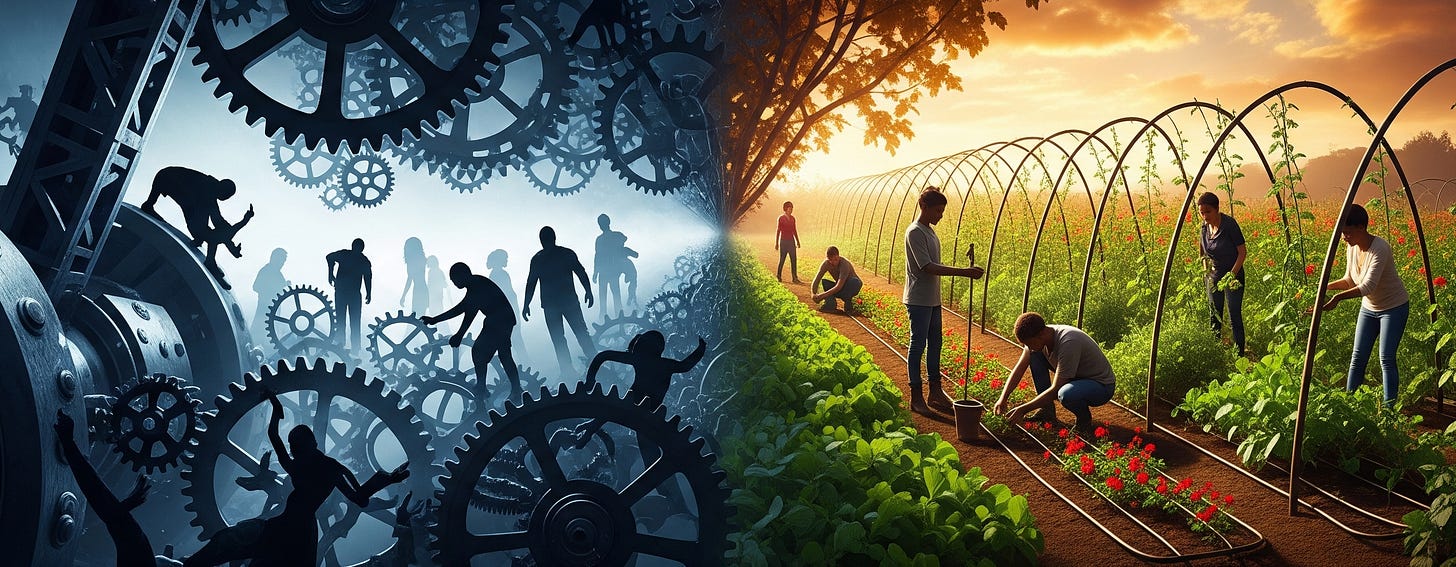Not All Systems Are Bad: Learning the Art of Resistance
The word “system” lands heavily these days. For many, it conjures images of an unfeeling machine, a rigged game, a force to be resisted. When we speak of “resisting the system,” it’s easy to imagine a call for chaos—a desire to tear everything down and leave nothing but rubble behind.
But true resistance isn't about mindless destruction. It’s about liberation. And liberation requires discernment.
The truth is, not all systems are bad. Systems can be powerful forces for good, acting as scaffolds that help us build a better world. They can also be devastating engines of harm, functioning as cages that limit our potential. The difference lies in the answer to a single, crucial question:
Does this system uplift and empower everyone—or does it serve only a select few at the expense of the many?
The Architecture of Empowerment: What Good Systems Do
A good system is designed for human flourishing. It strengthens our dignity, supports our freedom, lifts the vulnerable, and protects the common good. It creates an environment where individuals can thrive without crushing others to do so. Good systems are built on the principles of equity, access, and shared stewardship. They expand human potential.
Think of a public library. It doesn't ask for your credit card; it asks for your curiosity. It provides free and open access to knowledge for all, regardless of wealth or status. Consider the clean water infrastructure in a well-run city; it ensures a basic human need is met for everyone, not just those who can afford to buy it. Or imagine a truly universal healthcare system, offering care based on human need, not on profit margins.
These are systems of dignity. They trust people to own their lives and provide them with the tools and safety to do so.
The Engines of Exploitation: What Broken Systems Do
A broken or harmful system is just as easy to spot once you know the signs. It operates by concentrating power and wealth into the hands of a few. It thrives on inequality, fear, shame, and manipulation to maintain control. It doesn't ask for your participation; it demands your obedience.
These systems treat human beings as resources to be exploited, not as lives to be respected.
Corporate monopolies that extract wealth while crushing workers and communities are harmful systems. Racist legal structures that maintain inequality through biased policing and sentencing are harmful systems. Religious or political authoritarianism that uses shame and fear to control personal autonomy is a harmful system. Surveillance capitalism, which turns our attention and privacy into a commodity for profit, is a harmful system.
These systems don't just fail to uplift—they actively crush human dignity for the benefit of a privileged few.
Your Toolkit for Discernment: How to Tell the Difference
So, how do we become skilled at telling these systems apart? When you encounter any system—a new law, a workplace policy, a school rule, a social norm—you can use these questions as a litmus test:
Who benefits most from this? Follow the flow of power, money, and opportunity.
Who is excluded, punished, or left out? Listen for the voices that are silenced or ignored.
Does this system make life freer and more dignified for everyone, or does it protect the powerful by abandoning the vulnerable?
Is participation voluntary and informed, or is it coerced and hidden behind fear?
The answers reveal everything. Good systems welcome scrutiny and are built to evolve. Bad systems fear exposure and silence their critics.
The True Meaning of Resistance
If we want to build a better world, we can't just tear things down blindly. We must become wise architects of the future, discriminating between what deserves to be protected and what must be dismantled.
This is why this distinction matters so much. True resistance isn’t about rejecting all systems; it’s about consciously and deliberately rejecting systems of domination and choosing to build, protect, and champion systems of dignity instead. The future we are fighting for isn't merely the absence of oppression. It is the active, vibrant presence of justice, equity, freedom, and mutual respect.
Systems aren’t automatically good or bad. But every system must be judged—not by its slogans or its surface-level promises, but by its real-world impact on human lives.
If a system uplifts only a few at the cost of the many, it must be resisted. If it uplifts all in dignity and freedom, it must be protected, strengthened, and evolved.
The real revolution isn’t chaos. It’s conscious creation.
And it starts with the courage to always ask: Who does this system truly serve?
Synopsis:
Is 'resisting the system' just about tearing everything down in a fit of chaos? This article argues that true resistance is smarter—it’s about discernment. We explore the crucial difference between 'systems of dignity' that are built to uplift everyone, like a public library, and 'systems of domination' that exploit the many for the benefit of a select few. You'll learn a simple litmus test—a set of powerful questions—to help you distinguish between the two. Ultimately, this piece is a guide to becoming a conscious creator, showing how we can build a more just world by knowing what to protect and what to dismantle. Read the full article on the System Resistance League substack.


